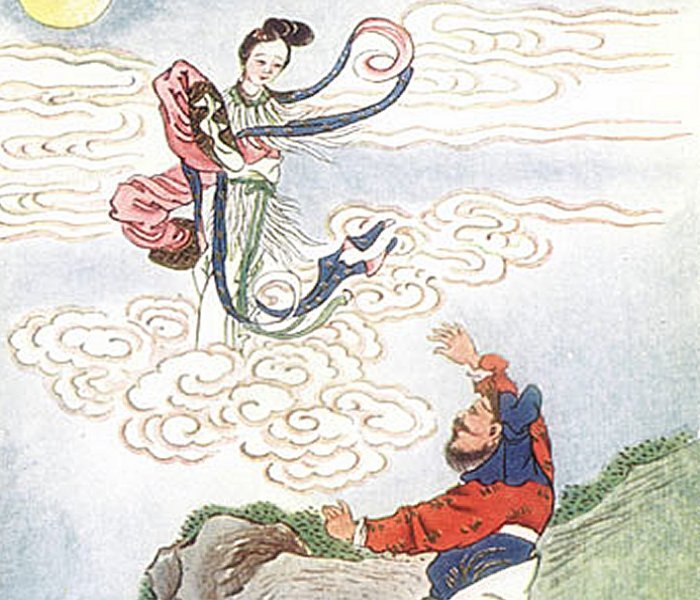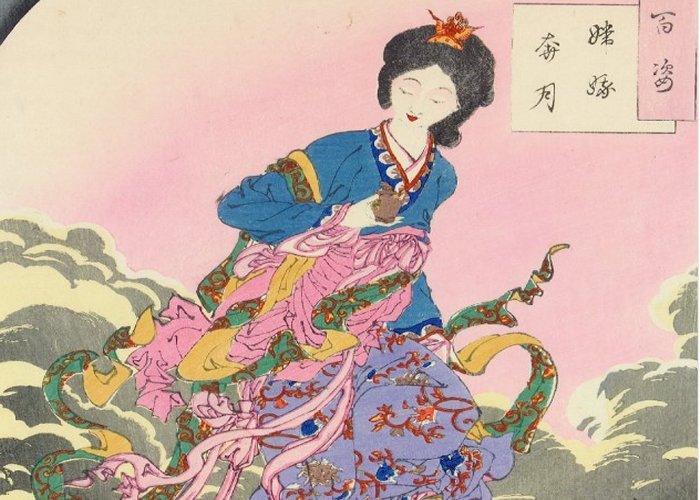Chang’e: Chinese Goddess Of Moon And Immortality
A. Sutherland - AncientPages.com - Many ancient cultures had their gods and goddesses related to the Moon. Egyptian lunar deity Khonsu (the 'wanderer' or "he who comes and goes") often wore a headdress consisting of a crescent moon, topped by a full moon, and took over many of Thoth's attributes but also assisted him in reckoning time.
Chang'e ascending to the moon (illustration by E.T.C. Werner (Myths and Legends of China) 1922.
In Greek beliefs, Selene is the personification of the Moon. She was depicted with wings, a torch, and a crescent on her head. According to the Greeks, she roamed the night sky in a shining, silver chariot drawn by white horses.
The Chinese had several lunar deities; among them was Chang'e, an immortal living on the Moon.
The Chinese goddess of the Moon - Chang'e (or Ch'ang O), which means 'the Lunar Toad', is the subject of many Chinese myths that date back to the Tang Dynasty (AD. 618 – 906).
She was the wife of the Yi ('Excellent Archer'), the mythical hero capable of shooting down nine suns with his arrow. One day, for his impressive achievements, Yi received the herb of immortality from the goddess Xiwangmu, the highest goddess and patron of fairies and wizards.
However, during her husband's absence, Chang'e stole and consumed the immortality and life-restoring herb. As a result, her body became very light, and she floated upward to the Moon. She is therefore regarded as the mother of the Moon or possibly its goddess.
In Chinese folklore, the goddess Chang'e is often accompanied by a rabbit who lives on the Moon. There, he makes the elixir of life for her.
More Myths And Legends
This story has several mythological accounts because each Chinese province has its own version.
One, for example, says that when the archer Yi went out hunting, his pupil Feng Meng approached his house and forced Chang'e to give him the elixir of immortality. During the quarrel with Feng Meng, Chang'e unintentionally drank the potion and flew to the Moon.
Chinese Lunar Goddess – Chang´e, ascending to the Moon. Image credit: The Trustees of the British Museum
Another version is that Chang'e was punished by the Queen Mother of the West, Xiwangmu, and changed into the Three-Legged Frog (Chanchu) and banished to the Moon.
One legend says that Chang'e was a beautiful girl who worked in Emperor Jade's palace in Heaven. Once, Chang'e accidentally damaged a precious porcelain jar. Irritated, the Jade Emperor exiled her to live on earth, where she became a wealthy family member. When she was 18 years old, a young, intelligent Houyi (Yi) from the neighboring village saw her, and they quickly became friends.
Strange Phenomenon In The Sky
A few days later, a strange phenomenon occurred in the sky. Instead of one Sun, as many as ten appeared, and their heat began to devastate the earth.
Yi decided to save the planet from the apocalypse and shot down nine of the ten suns. He succeeded, and his deeds made him a famous folk hero, a king, and finally, a husband of the beautiful Chang'e.
Unfortunately, the new king changed much over time. Greedy and selfish, he wanted to find a way to extend his life and eternal glory. He sought immortality and eventually brought the elixir of immortality to his palace. Still, he had no chance to taste it because Chang'e deliberately (or by mistake, as some claim) swallowed it.
It made the king so furious that he wanted to kill his wife. Trying to run away from him, Chang'e, jumped out of the window. Instead of falling, she ascended to the Moon.
Written by – A. Sutherland - AncientPages.com Senior Staff Writer
Updated on November 8, 2022
Copyright © AncientPages.com All rights reserved. This material may not be published, broadcast, rewritten or redistributed in whole or part without the express written permission of AncientPages.com
More From Ancient Pages
-
 Did Leonardo Da Vinci Invent Contact Lenses In 1508?
Ancient Technology | Dec 10, 2015
Did Leonardo Da Vinci Invent Contact Lenses In 1508?
Ancient Technology | Dec 10, 2015 -
 Ggantija Double Temple On Malta Is Older Than Stonehenge And Great Pyramid Of Giza
Civilizations | Jan 16, 2023
Ggantija Double Temple On Malta Is Older Than Stonehenge And Great Pyramid Of Giza
Civilizations | Jan 16, 2023 -
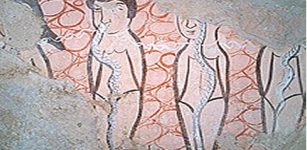 Ancient Monastery In The Middle Of ‘Syria’s Stonehenge’ – Underground Caves, Tombs, Stone Circles Older Than Pyramids
Civilizations | Nov 13, 2015
Ancient Monastery In The Middle Of ‘Syria’s Stonehenge’ – Underground Caves, Tombs, Stone Circles Older Than Pyramids
Civilizations | Nov 13, 2015 -
 Ancient DNA Of Segorbe Giant Reveals A Brutal Event In Medieval Spain
News | Sep 26, 2021
Ancient DNA Of Segorbe Giant Reveals A Brutal Event In Medieval Spain
News | Sep 26, 2021 -
 Tides And Hurricane Activity Impacted The Maya Civilization – What Can This Tell About Modern Climate Change?
Archaeology | Aug 18, 2021
Tides And Hurricane Activity Impacted The Maya Civilization – What Can This Tell About Modern Climate Change?
Archaeology | Aug 18, 2021 -
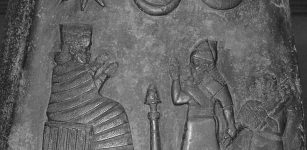 Kudurru Of Melishihu – Stone Records From The Kassite Dynasty In Babylonia
Artifacts | Jan 17, 2016
Kudurru Of Melishihu – Stone Records From The Kassite Dynasty In Babylonia
Artifacts | Jan 17, 2016 -
 The Seal Of Solomon, The Fifth Element And The Andromeda Constellation Reveal An Intriguing Connection
Ancient Mysteries | Mar 8, 2018
The Seal Of Solomon, The Fifth Element And The Andromeda Constellation Reveal An Intriguing Connection
Ancient Mysteries | Mar 8, 2018 -
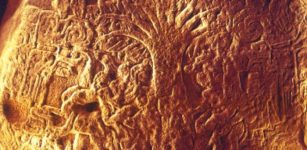 Ceiba Tree: Sacred Tree Of Life Of Maya People And Universal Concept In Ancient Beliefs
Celtic Mythology | Jun 12, 2017
Ceiba Tree: Sacred Tree Of Life Of Maya People And Universal Concept In Ancient Beliefs
Celtic Mythology | Jun 12, 2017 -
 Hundreds Of Exceptional Bronze Age Artifacts Discovered In France Were Probably Offerings
Archaeology | Aug 28, 2021
Hundreds Of Exceptional Bronze Age Artifacts Discovered In France Were Probably Offerings
Archaeology | Aug 28, 2021 -
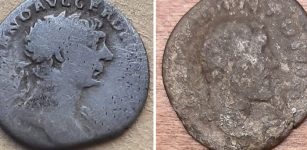 Unique Discovery – 2,000-Year-Old Roman Coins Found On Gotska Sandön In Sweden
Archaeology | Apr 13, 2023
Unique Discovery – 2,000-Year-Old Roman Coins Found On Gotska Sandön In Sweden
Archaeology | Apr 13, 2023 -
 Fomorians In Irish Myths And Legends: Race Of Demonic Giants Who Inhabited Ireland And Scotland
Celtic Mythology | May 20, 2017
Fomorians In Irish Myths And Legends: Race Of Demonic Giants Who Inhabited Ireland And Scotland
Celtic Mythology | May 20, 2017 -
 Trolls – Fascinating Mythical Creatures Of Scandinavia
Featured Stories | Jun 13, 2022
Trolls – Fascinating Mythical Creatures Of Scandinavia
Featured Stories | Jun 13, 2022 -
 Why Were Neolithic Houses Always Built Counterclockwise?
Archaeology | Jan 13, 2020
Why Were Neolithic Houses Always Built Counterclockwise?
Archaeology | Jan 13, 2020 -
 Magnificent Trumpington Cross And Highly Unusual Anglo-Saxon ‘Bed Burial’ In Cambridge Offer Unique Insight Into English Christianity
Archaeology | Feb 22, 2018
Magnificent Trumpington Cross And Highly Unusual Anglo-Saxon ‘Bed Burial’ In Cambridge Offer Unique Insight Into English Christianity
Archaeology | Feb 22, 2018 -
 Circe: Powerful Divine Sorceress Who Mastered Healing, Miracles And Transforming People Into Animals In Greek Mythology
Featured Stories | Aug 12, 2023
Circe: Powerful Divine Sorceress Who Mastered Healing, Miracles And Transforming People Into Animals In Greek Mythology
Featured Stories | Aug 12, 2023 -
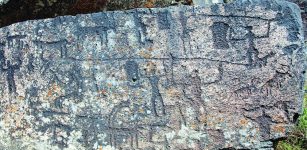 15 Prehistoric Rock Paintings Discovered Near Ancient Armenian City Of Ani
Archaeology | Dec 14, 2015
15 Prehistoric Rock Paintings Discovered Near Ancient Armenian City Of Ani
Archaeology | Dec 14, 2015 -
 Cynane: Talented Female Military Leader Assassinated While Giving A Speech
Featured Stories | Mar 5, 2019
Cynane: Talented Female Military Leader Assassinated While Giving A Speech
Featured Stories | Mar 5, 2019 -
 Two Vikings From The Same Family Reunited After 1,000 Years
Archaeology | Jun 15, 2021
Two Vikings From The Same Family Reunited After 1,000 Years
Archaeology | Jun 15, 2021 -
 On This Day In History: 55 Delegates Convened To Write What Would Become The U.S. Constitution – On May 14, 1787
News | May 14, 2016
On This Day In History: 55 Delegates Convened To Write What Would Become The U.S. Constitution – On May 14, 1787
News | May 14, 2016 -
 Mystery Of Famous Viking Ruler Rollo: DNA Experts Seek The Truth About His Identity
Featured Stories | Mar 16, 2016
Mystery Of Famous Viking Ruler Rollo: DNA Experts Seek The Truth About His Identity
Featured Stories | Mar 16, 2016

